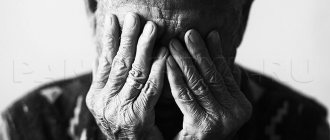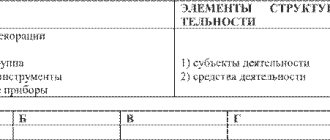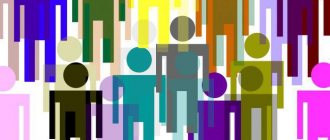What is psychological maladjustment
This is how psychologists have to deal with the term “psychological maladjustment.” This term refers to a decrease or loss of ability to adapt to the environment.
With the development of psychological maladaptation, a person’s behavior ceases to correspond to life situations. The peculiarity of this condition is that its manifestation can be situational or dependent on certain circumstances. For example, when working in a team, a person feels uncomfortable. But at home everything is fine with his psycho-emotional background. Or he feels good only where there are no people
Psychological maladjustment occurs not only in adults. It is also often observed in adolescents and children. The abundance of gadgets encourages the child to withdraw from communication at the moment when he needs to resolve any issues. For children's consciousness, this can be dangerous because antisocial behavior is consolidated quite quickly.
What it is
Disadaptation is a person’s inability to adapt to certain, most often new, conditions of existence. It finds expression in behavior that is not typical for him in his usual environment. For example, at home he can behave completely normally: communicate with family and neighbors, take care of his parents, keep the apartment clean, and show respect for family values. At work, he changes radically: he cannot establish contact with colleagues and superiors, he is rude or withdrawn and does not utter a word, does not comply with the company’s Charter (he is late, smokes in the wrong place).
Maladaptive behavior is a violation of the basic rules of society that apply in certain conditions (at work, at school, in the family, in a government agency, in any association).
However, with maladaptation, not only behavior changes, but also the psychophysical state of a person. If at home he is calm and feels great, then at work his level of anxiety rises sharply, his breathing and heart rate quicken, he sweats profusely, and panic attacks occur. This condition affects almost all personal spheres - emotional, physiological, behavioral.
How this could end:
- with successful correction and outside help, adaptation will go well and the person will be able to learn the rules and regulations;
- in their absence, he will not withstand the emotional load, aggravated by physiology, and will fall out (consciously or not) from these conditions of existence: change jobs, get divorced, stop going to school;
- will continue to tolerate them, and this maladjustment will force him to live in constant stress.
The last case is the most difficult. Psychologists say that more than 30% of people can be called maladjusted, since they cannot emotionally, physically and psychologically accept the work conditions they have to go to every day. They don’t turn to specialists for help, and they don’t try to look for a new place for various reasons (here it’s closer to home, they pay well, but what if it turns out worse there).
On a note. In medicine there is a similar diagnosis: maladjustment syndrome. It is given to newborns with cardiovascular disorders due to perinatal hypoxia.
Danger of violation
Since many people's behavior changes depending on their environment and situation, calculating social maladaptation is not easy. Moreover, it does not appear immediately. Developing gradually, the disorder can make itself felt suddenly when, for example, a person finds himself in a difficult situation and it turns out that he is not adapted to it.
The loss of the ability to adapt to circumstances is often not considered serious by the individual. But the danger of psychological maladjustment is that the longer it develops without being corrected, the more difficult it will be to eradicate the problem. As you know, changing behavioral habits is very difficult. And when they are caused by psychophysical conditions that have been fixed for years, this may turn out to be impossible.
Social maladjustment of adolescents
The process of socialization is the introduction of a child into society. This process is characterized by complexity, multifactoriality, multidirectionality and poor forecasting in the end. The socialization process can last a lifetime. One should not deny the impact of the innate qualities of the body on personal properties. After all, the formation of personality occurs only as a person is included in the surrounding society.
One of the prerequisites for the formation of personality is interaction with other subjects who transfer accumulated knowledge and life experience. This is accomplished not through simple mastery of social relations, but as a result of the complex interaction of social (external) and psychophysical (internal) developmental inclinations. And it represents the cohesion of socially typical traits and individually significant qualities. It follows from this that personality is socially conditioned and develops only in the process of life, in a change in the child’s attitude to the surrounding reality. From this we can conclude that the degree of socialization of an individual is determined by many components, which, when combined, form the overall structure of the influence of society on an individual. And the presence of certain defects in each of these components leads to the formation in the individual of social and psychological qualities that can lead the individual in specific circumstances to conflict situations with society.
Under the influence of socio-psychological conditions of the external environment and in the presence of internal factors, the child develops maladjustment, manifested in the form of abnormal - deviant behavior. Social maladaptation of adolescents arises from violations of normal socialization and is characterized by deformation of the referent and value orientations of adolescents, a decrease in the significance of the referent character and alienation, first of all, from the influence of teachers at school.
Depending on the degree of alienation and the depth of the resulting deformations of value and reference orientations, two phases of social maladjustment are distinguished. The first phase consists of pedagogical neglect and is characterized by alienation from school and loss of referent significance at school while maintaining a fairly high reference significance in the family. The second phase is more dangerous and is characterized by alienation from both school and family. The connection with the main institutions of socialization is lost. The assimilation of distorted value-normative ideas occurs and the first criminal experience appears in youth groups. The result of this will be not only a lag in learning, poor performance, but also increasing psychological discomfort that adolescents experience at school. This pushes adolescents to search for a new, non-school communication environment, another reference group of peers, which subsequently begins to play a leading role in the process of socialization of adolescents.
Factors of social maladaptation of adolescents: exclusion from the situation of personal growth and development, neglect of the personal desire for self-realization, self-affirmation in a socially acceptable way. The consequence of maladaptation will be psychological isolation in the communicative sphere with a loss of the sense of belonging to its inherent culture, a transition to attitudes and values that dominate the microenvironment.
Unmet needs can lead to increased social activity. And it, in turn, can result in social creativity and this will be a positive deviation, or it will manifest itself in antisocial activity. If she does not find a way out, she may seek a way out by becoming addicted to alcohol or drugs. The most unfavorable development is a suicide attempt.
The current social and economic instability, the critical state of the health care and education systems not only does not contribute to the comfortable socialization of the individual, but also aggravates the processes of maladaptation of adolescents associated with problems in family upbringing, which lead to even greater anomalies in the behavioral reactions of adolescents. Therefore, the process of socialization of adolescents is increasingly becoming negative. The situation is aggravated by the spiritual pressure of the criminal world and their values, rather than civil institutions. The destruction of the main institutions of socialization leads to an increase in crime among minors.
Also, the sharp increase in the number of maladjusted adolescents is influenced by the following social contradictions: indifference to smoking in secondary schools, the lack of an effective method of combating truancy, which today has practically become the norm of school behavior, along with the ongoing reduction in educational and preventive work in government organizations and institutions that deal with leisure and raising children; replenishment of juvenile gangs of criminals due to teenagers who have dropped out of school and are lagging behind in their studies, along with a decrease in social relationships between families and teachers. This makes it easier for teenagers to establish contacts with juvenile criminal groups, where illegal and deviant behavior develops freely and is welcomed; crisis phenomena in society that contribute to the growth of anomalies in the socialization of adolescents, along with a weakening of the educational influence on adolescents of public groups that should exercise education and public control over the actions of minors.
Consequently, the increase in maladjustment, deviant behavior, and teenage crime is the result of the global social alienation of children and youth from society. And this is a consequence of a violation of the immediate processes of socialization, which have become uncontrollable and spontaneous in nature.
Signs of social maladaptation of adolescents associated with such an institution of socialization as school:
The first sign is poor academic performance in the school curriculum, which includes: chronic underachievement, repeating a year, insufficient and fragmentary acquired general educational information, i.e. lack of a system of knowledge and skills in studies.
The next sign is systematic violations of an emotionally charged personal attitude towards learning in general and some subjects in particular, towards teachers, and life prospects related to learning. Behavior can be indifferent-indifferent, passive-negative, demonstrative-dismissive, etc.
The third sign is regularly recurring anomalies of behavior during school learning and in the school environment. For example, passive-refusal behavior, lack of contact, complete refusal of school, persistent behavior with violation of discipline, characterized by oppositional defiant actions and including active and demonstrative opposition of one’s personality to other students and teachers, disregard for the rules adopted at school, vandalism at school .
Types of psychological maladjustment
Disadaptation manifests itself in a person primarily in communication with other people. He ceases to show empathy and becomes indifferent to the world around him. The following types of this violation are distinguished.
Social maladjustment
This form is expressed in a violation of establishing connections with society. It is characterized by antisocial behavior, the inability of an individual to show an adequate reaction to any incident. This type of disorder often occurs in schoolchildren. Parents may notice excessive depression in the baby, anxiety, and tearfulness. A child may develop a nervous tic. You definitely need to pay attention to these signs.
Pathogenic maladaptation
Associated with changes in the psyche. It also occurs when a person has nervous or mental illnesses or various types of abnormalities. When correcting the condition in this case, it is advisable to work with the disease that was the cause of maladjustment.
Psychosocial maladjustment
Problems with the ability to adapt to a particular situation in this case are associated with the individual social characteristics of the individual. For example, when moving from kindergarten to school, a child may become more withdrawn. Often this type of disorder is temporary. However, parents need to be careful. Prolonged alienation from society can contribute to changes in the child’s psyche, and maladaptation will turn into a pathogenic form.
There is a fine line between social and psychosocial maladjustment. The type of violation is determined based on the characteristics of the manifestation.
Disadaptation is also divided into partial and complete:
- With partial, a person just begins to fall out of public life. For example, he may not be interested in the world around him due to illness, or limit communication. This is often a temporary phenomenon.
- With complete maladjustment, profound personal changes occur. A person loses faith in himself and people, becomes withdrawn, and loses his taste for life. This is a very dangerous form, often manifested in people with some kind of addiction.
Socio-psychological approach to the problem of maladjustment
In the process of socio-psychological adaptation, a person’s inner world also changes: new ideas and knowledge about the activities that he performs appear, which leads to self-correction and self-determination of the individual. Personal self-esteem associated with the new activity of the subject, his goals and objectives, difficulties and requirements, level of requirements, image of “I”, reflection, “I-concept”, assessment of oneself in comparison with others, also undergo changes. Based on these reasons, a change in attitude towards self-affirmation occurs, a person acquires the necessary knowledge, skills and abilities. All this determines the essence of his socio-psychological adaptation to society and the success of his education.
Considering personal maladjustment at the socio-psychological level, the authors identify three main options for personal maladjustment:
a) persistent situational maladaptation, which occurs when a person in certain social situations (for example, as part of certain small groups) does not find ways and means of adaptation, although he makes such attempts - this state can be correlated with the state of ineffective adaptation;
b) temporary maladaptation, which is eliminated by adequate adaptive measures, social and intrapsychic actions, which corresponds to unstable adaptation.
c) general stable maladjustment, which is a state of frustration, the presence of which activates the formation of pathological defense mechanisms.
Manifestations of psychological maladaptation include the so-called ineffective maladaptation, which is expressed in the formation of psychopathological conditions, neurotic or psychopathic syndromes, as well as unstable adaptation in the form of periodic neurotic reactions, exacerbation of accentuated personality traits.
The result of socio-psychological disadaptation is a state of personal disadaptation.
Conflict forms the basis of maladaptive behavior, and under its influence an inadequate response to environmental conditions and demands is gradually formed in the form of behavioral deviations in response to systematic, constantly provoking factors that the child is not able to cope with. Initially, the child experiences disorientation: He is lost, does not know how to behave in a given situation in order to cope with this overload, and either does not react at all or reacts in the first possible way. Therefore, at the initial stage the child is destabilized to a certain extent. After a while this confusion will pass and he will calm down; if such signs of destabilization are repeated quite often, this will lead to the emergence of persistent internal (dissatisfaction with oneself, position) and external (in relation to the environment) conflict, which will lead to constant psychological discomfort and, as a consequence of this condition, to maladaptive behavior.
This point of view is supported by many domestic psychologists (B.N. Almazov, 1986; M.A. Ammaskin, 1979; M.S. Pevzner, 1995; I.A. Nevsky, 1981; A.S. Belkin, 1981; K. S. Lebedinskaya, 1988, etc.) The authors define deviations in “behavior through the prism of the psychological complex of environmental alienation of the subject, as a result of which, not being able to change the environment in which being in which is burdensome for oneself, the awareness of one’s incompetence forces the subject to switch to defensive forms of behavior, create semantic and emotional barriers in relation to other people, reduce the level of aspirations and self-esteem.”
These studies form the basis of a theory that takes into account the compensatory capabilities of the body, where socio-psychological maladaptation is understood as a psychological state caused by the functioning of the psyche at the limit of its regulatory and compensatory capabilities and manifested in insufficient activity of the individual, in difficulties in realizing his basic social needs (needs for communication, recognition, self-expression), in violation of self-affirmation and free expression of one’s creative abilities, in inadequate orientation in a communication situation.
Features of psychological maladjustment
Is it difficult to recognize maladjustment in yourself, a loved one or a child?
It is difficult for a person who does not strive to interact with people to exist in the real world. He lives more in an illusory, invented reality. The following signs are characteristic of the violation:
- When maladjusted, a person is overly irritable. It is difficult for him to take the side of another, to understand him. It should be noted that he often does not understand himself.
- Aggression is a common sign of psychological maladjustment. Due to the loss of harmonious communication skills, a person’s thinking becomes more negative. He strives to get what he wants through manipulation, but not through direct interaction with people.
- Withdrawal into oneself. Due to the fact that it becomes more and more difficult to make new acquaintances, the person withdraws into himself, replacing real emotions and feelings with fantasies. Closeness is also a way for an individual to protect himself from the influences of society. It is important for him that no one and nothing change his mood and intentions.
- Focus on yourself. Not wanting to communicate with other people, the person is completely immersed in his own experiences. Despite such detachment, deep down a person is very worried that he is not needed by society and feels empty. But, unfortunately, recognizing the problem and taking action can be very difficult.
- Reluctance to adapt to the demands of society. It seems to a person that reality should correspond to a state of affairs that is convenient for him. If this is not the case, the best way is to protect yourself from all kinds of risks. But in the end, this only makes the situation worse.
- The individual becomes socially phobic. This trait characterizes any type of maladjustment. Due to the fact that a person does not want to build social connections, he may soon be left completely alone. Other people in return will also not be interested in his condition.
Signs
In children, maladaptive behavior is noticeable to the naked eye, even to a non-specialist. Parents, teachers, school psychologists, and peers see this. In adults it may be more veiled. For example, if a person does not want to lose his job and does not have mental disabilities, he can hide his dissatisfaction, although this can still be seen by some external manifestations (disrespect for colleagues and boss, systematic tardiness, frequent sick leave, depression). Psychologists call the most striking signs of maladjustment:
- irritability, which extends not only to others, but also to one’s own behavior;
- aggression;
- negative thinking (bad thoughts prevail over good ones);
- withdrawal into oneself: lack of new acquaintances, breakup of old relationships, loss of connections with friends and family, replacement of the real world with an illusory one;
- concentration on oneself, complete immersion in one’s own experiences, emptiness;
- partial or complete violation of moral and legal norms, rules in force in the conditions in which he finds himself;
- an attempt to adapt the environment to oneself, but not oneself to new conditions;
- maladjusted children (especially teenagers) are characterized by pronounced antisocial, deviant behavior;
- deterioration of mental state: depression, nervousness, inadequate assessment of oneself and what is happening, panic attacks, anxiety;
- deterioration of physical health: pressure surges, increased heart rate, increased sweating and other vegetative-vascular symptom complexes.
The most critical manifestation of maladjustment, according to psychologists, is social phobia, which, if uncorrected, can lead to suicide and, in childhood, autism.
Causes of maladjustment
Like any disorder, maladaptation of any kind has its causes. The most common of them are given below.
Pedagogical neglect
This is the cause of antisocial behavior in children. The essence of the problem is that little work is done with children; as a result, they feel unnecessary. When such a child grows up, he withdraws into himself more, and it becomes more difficult to let someone into his inner world. It is often very difficult for a person who felt this way in childhood to find his place in life.
Lack of mutual understanding in the family
The child feels the atmosphere of the family very subtly. When everything is not going well, there is no trust between parents, and the student or teenager begins to withdraw. Over time, the problem also gets worse.m
Changing your usual lifestyle
This reason is external. Sometimes a person loses his usual social circle due to illness, dismissal, or some kind of stress. Disadaptation begins some time after the incident. And the beginning is an elementary reluctance to leave the house again or communicate with people. As a result, a person will face difficulties in joining society in the future.
Conflict with the environment
When a person is in confrontation with the world, believing that everyone around him is wrong, it becomes extremely difficult for him to interact with people. As a result, he withdraws into himself.
An incorrect attitude towards the world, based on false beliefs, does not allow a person to build comfortable, trusting relationships in society. He becomes helpless and suspicious.
- internal conflicts. Unable to understand oneself and resolve internal contradictions, a person often closes himself off from the world. After all, it is very difficult to interact harmoniously with people when you do not agree with yourself;
- excessive exposure to the Internet.
The Internet space makes it possible to receive emotions from communication without encountering a person in reality. In small quantities, such communication does not cause harm. But when, due to any problems, people increasingly go online, this becomes the reason for the development of antisocial behavior.
Human maladjustment, its causes, prevention and overcoming
Disadaptation (from the Latin prefix de... or French des...) - means, first of all, disappearance, destruction, complete absence and is only much less often used as a decrease, reduction. A number of scientific publications use the term “disadaptation” (from the Latin dis - in the first meaning - disturbance, distortion, deformation, much less often - disappearance). Consequently, if we mean a violation, a distortion of adaptation, then we should talk specifically about disadaptation (through “and”), since complete loss, the disappearance of adaptation - this, when applied to a thinking being, should mean the cessation of meaningful existence in general, because while this the creature is alive and conscious, it is somehow adapted to the environment. At the same time, the Latin de is read both as “de” and “di”. Consequently, the essence of the word “maladjustment” is determined by what is included in it. This fact means that “disadaptation” and “disadaptation” in domestic literature and in practice are considered as synonyms.
Most often, disadaptation (disadaptation) is understood as a discrepancy between a person’s sociopsychological and psychophysiological status and the requirements of a life situation, which in turn does not allow him to adapt to the conditions of his environment. The phenomenon of maladaptation can occur in a separate (typical) or any environment. For example, at home a child feels quite comfortable and does not experience maladaptive phenomena, but in kindergarten, on the contrary, he feels uncomfortable.
Disadaptation, like adaptation, is considered as a process, manifestation and result.
Disadaptation as a process means a decrease in a person’s adaptive capabilities in the conditions of the living environment or in certain conditions (for example, in a kindergarten, class, group, etc.). It can manifest itself over time and lead to completely different consequences. In particular, maladaptation can have a sluggish current character and be practically invisible, becoming at a certain stage a serious problem that manifests itself sharply when a person in a certain situation turns out to be completely unadapted to it and cannot find himself. In this case, the consequences can be quite serious. For a child, long-term maladjustment is fraught with delays in development, the formation of negative attitudes, and anxiety.
Disadaptation as a manifestation is an external characteristic of any human ill-being, which is expressed in his atypical behavior, attitude and performance in given environmental conditions. Each child has its own forms of manifestation. It is often difficult to identify it externally. It is necessary to know the person well and his typical manifestations in various situations. The ability to timely understand the signs of maladjustment allows the teacher to quickly respond to the situation, preventing deep-seated negative consequences. We are not talking about creating greenhouse conditions for the pupil, but about preventing significant negative deformation consequences for him under the influence of maladjustment.
Disadaptation as a result is evidence of a comparative assessment of a qualitatively new state and manifestation that does not correspond to environmental conditions that are not typical for this person, based on his previous behavior and attitude (kindergarten teacher, student, etc.) to peers, studies and activities. In relation to a child, this is evidence that his behavior, relationships and performance (in relationships with children and adults, studies, games, etc.) do not correspond to the social norms that are characteristic of him (his peers) in these conditions environment.
In the specialized literature and in practice, the category maladapted is used in relation to a certain category of people: maladjusted children, maladjusted child, maladjusted group, as well as in relation to the environment that caused deformation phenomena: school maladjustment, family maladjustment, etc.
Maladjusted children. These are children who, for various reasons, cannot adapt to the conditions of their living environment (kindergarten group, class group, peer group, etc.) on an equal basis with their peers and other children, which negatively affects their self-expression, development, education, training, for example, a student who is performing poorly in class. At the same time, poor academic performance may not be the result of maladaptation, but a reflection of the student’s individual cognitive abilities in learning, reluctance to learn, etc.
A maladjusted person. This is a person who is different from other people due to problems of adaptation in the environment of life that affected him, his development, activity, and ability to solve problems that are natural for this situation.
Maladjusted child. A child who differs from his peers due to problems of adaptation in the environment that affected him, his development, socialization, and ability to solve problems that are natural for his peers.
A certain category of children quickly overcomes the state of maladjustment that they encounter in life. They do not encounter any particular difficulties in the process of natural adaptation to the conditions of the new environment. However, it should be emphasized that, despite the fact that children are quite dynamic in adapting to various conditions, they often experience great difficulties, which seriously affect maladapted children, their subsequent self-realization and self-improvement. Such children need help and support at the adaptation stage. The absence of these can have serious negative consequences for them.
School maladjustment. It is most often noted by teachers of primary schools, where children study who have difficulty adapting to school reality. It is typical for children aged 6-8 years, who do not understand the classroom situation, who do not have good relationships with classmates, and against this background there is practically no progress in the development of their cognitive activity or its pace is reduced. Such children need special attention and help from the teacher, an individual approach to their education and upbringing. An equally important role in stimulating the adaptive capabilities of these children belongs to the class team, its respectful attitude towards them and support.
If the teacher is able to build pedagogically appropriate relationships with maladjusted students, their parents and the class, school maladaptation can be largely overcome within 2-4 months after the start of the school year. In more severe cases, when children have persistent negative reactions to the learning situation in the classroom, it is necessary to obtain professional advice from specialists, including a psychologist, and in some cases, when the child has neurotic reactions in the form of irritable tearfulness, nervousness, aggressiveness in combination with sleep and appetite disorders, then see a neuropsychiatrist.
Various categories of children, under certain conditions, need targeted support and assistance to prevent the occurrence of maladaptation or overcome it in the process of their upbringing and education. Maladjusted children with pathological forms often need educational work with them in special educational institutions, oriented taking into account the factor that led the children to this condition. To work with them, special techniques and trained specialists are needed.
The main causes of human maladjustment are groups of factors. These include: personal (internal), environmental (external), or both.
Personal (internal) factors of human maladjustment are associated with insufficient realization of his social needs as an individual. These include:
- long-term illness;
- the child’s limited ability to communicate with his environment, people and the lack of adequate (taking into account individual characteristics) communication with him from his environment;
- long-term isolation of a person, regardless of his age (forced or forced) from the environment of everyday life;
- switching to another type of activity (long vacation, temporary performance of other official duties), etc.
Environmental (external) factors of a person’s maladaptation are associated with the fact that they are not familiar to him and create discomfort, which to one degree or another restrains personal manifestation.
These include:
- unhealthy family environment that suppresses the child’s personality. Such a situation may occur in “at-risk” families; families in which an authoritarian parenting style predominates, child abuse;
- absence or insufficient attention to communication with the child from parents and peers;
- suppression of personality due to the novelty of the situation (child’s arrival at kindergarten, school; change of group, class);
- suppression of the individual by a group (maladaptive group) - rejection of the child by the team, microgroup, oppression, violence against him, etc. This is especially typical for adolescents. Manifestation of cruelty (violence, boycott) on their part towards peers is a frequent occurrence;
- a negative manifestation of “market education”, when success is measured exclusively by material wealth. Unable to provide sufficient income, a person finds himself in a complex depressive state;
- negative influence of the media in “market education”. Formation of interests that do not correspond to age, promotion of the ideals of social well-being and the ease of achieving them. Real life leads to significant disappointment, complexion, and maladjustment. Cheap mystery novels, horror films and action films form in an immature person the idea of death as something vague and idealized;
- the maladaptive influence of an individual, in whose presence the child experiences great tension and discomfort. Such a personality is called maladaptive (a maladaptive child is a group) - this is a person (group) who, under certain conditions in relation to the environment (group) or an individual, acts as a factor of maladaptation (affecting self-manifestation) and, thus, restrains his activity , the ability to realize oneself most fully. Examples: a girl in relation to a guy who is not indifferent to her; a gynergic child in relation to the class; difficult to educate, actively playing a provoking role in relation to the teacher (especially a young one), etc.;
- overload associated with “concern” for the development of the child, which is not suitable for his age and individual capabilities, etc. This fact occurs when an unprepared child is sent to a school or gymnasium class that does not correspond to his individual capabilities; overload the child without taking into account his physical and mental capabilities (for example, with sports, school, club activities).
Maladjustment of children and adolescents leads to various consequences. Most often these consequences are negative, including:
- personal deformations;
- insufficient physical development;
- impaired mental function;
- possible brain dysfunction;
- typical nervous disorders (depression, lethargy or excitability, aggressiveness);
- loneliness - a person finds himself alone with his problems. It can be associated with external alienation of a person or with self-alienation;
- problems in relationships with peers, other people, etc. Such problems can lead to suppression of the main instinct of self-preservation. Unable to adapt to the current conditions, a person may take extreme measures - suicide.
A positive manifestation of maladaptation is possible due to a qualitative change in the living environment of a child or adolescent with deviant behavior.
Often, disadapted children include those who, on the contrary, are themselves a person who seriously influences the adaptation of another person (group of persons). In this case, it is more correct to talk about a maladaptive person or group.
“Street children” are also often classified as maladjusted. We cannot agree with this assessment. These children are better adapted than adults. Even in difficult life situations, they are in no hurry to take advantage of the help offered to them. To work with them, specialists are trained who can convince them and bring them to a shelter or other specialized institution. If such a child is taken from the street and placed in a specialized institution, then at first he may turn out to be maladapted. After a certain time, it is difficult to predict who will be maladjusted - he or the environment in which he finds himself.
High adaptability to the environment of new children with deviant behavior often leads to serious problems of a negative nature in relation to the majority of children. Practice shows that there are facts when the appearance of such a child requires the teacher or educator to make certain protective efforts in relation to the entire group (class). Individuals may well have a negative impact on the entire group and contribute to its maladjustment in learning and discipline.
All of these factors pose a direct threat, primarily to the intellectual development of the child. Difficulty in education, social and pedagogical neglect pose a danger of maladaptation of the child himself in the field of education, training and education, as well as of individuals and groups. Practice convincingly proves that just as the child himself becomes a victim of maladjustment in the new environment, under certain conditions he acts as a factor in the maladjustment of others, including the teacher.
Considering the predominantly negative impact of maladjustment on the personality development of a child and adolescent, it is necessary to carry out preventive work to prevent it. The main ways to help prevent and overcome the consequences of maladjustment in children and adolescents include:
- creating optimal environmental conditions for the child;
- avoiding overload in the learning process due to the discrepancy between the level of learning difficulties and the individual capabilities of the child and the organization of the educational process;
- support and assistance to children in adapting to new conditions;
- encouraging the child to self-activate and express himself in the environment of life, stimulating their adaptation, etc.;
- creation of an accessible special service for socio-psychological and pedagogical assistance to various categories of the population who find themselves in difficult life situations: helplines, offices for socio-psychological and pedagogical assistance, crisis hospitals;
- training parents, teachers and educators in methods of working to prevent maladaptation and overcome its consequences;
- training of specialists for specialized services of socio-psychological and pedagogical assistance to various categories of people in difficult life situations.
Maladjusted children need efforts to provide or help in overcoming it. Such activities are aimed at overcoming the consequences of maladjustment. The content and nature of social and pedagogical activity is determined by the consequences to which maladaptation has led.
Correction
To overcome social maladaptation and begin to live a normal life, filled with positive communication with others, you need to work through your internal fears. Working with a psychologist will help here. A specialist will help a person realize what is bothering him. So the main methods of combating violations are:
- work with a psychologist and psychotherapist;
- social contacts.
Going out into society and doing what you are afraid of is an effective way to overcome people's fear. It's easier to do this if you look for the positive. You can, for example, sign up for an interesting training, find a hobby, and working in a team will help you find friends and support.
Of course, developing an optimistic mindset takes effort. But a person’s sincere desire to live a full social life will help to develop new communication skills.
Correction of social maladjustment
In childhood, the main directions for correcting social maladjustment of the individual should be: development of communication skills, harmonization of interpersonal communication in the family and in peer groups, adjustment of certain personality traits that impede communication, or transformation of the manifestations of traits in such a way that in the future they cannot negatively affect communication. sphere, adjusting children’s self-esteem to bring it closer to normal.
Currently, trainings that are especially popular in the correction of social maladaptation are: psychotechnical games aimed at developing various mental functions that are associated with transformations in consciousness, and role-playing socio-psychological training.
This training is aimed at resolving the internal contradictions of the subject in the conditions of developing certain skills in performing specific social functions (formation and consolidation of the necessary social and cultural norms). The training takes place in the form of a game.
Main functions of the training:
- training, which consists in the development of skills and abilities necessary for learning, such as: attention, memory, reproduction of received information, foreign speech skills;
- entertaining, serves to create a more favorable atmosphere during the training, which transforms training into an exciting and entertaining adventure;
- communicative, which consists in establishing emotional contacts;
- relaxation – aimed at relieving emotional stress;
- psychotechnical, characterized by the formation of skills to prepare one’s own physiological state in order to obtain more information;
- preventive, aimed at preventing unwanted behavior;
- developmental, characterized by the development of personality from different sides, the development of character traits through playing out all possible situations.
Social-psychological training consists of a specific psychological impact, which is based on active methods of working in groups. It is characterized by the intensity of the individual’s preparation for a more fulfilling and active life. The essence of the training is specially organized training for the purpose of self-improvement of the individual’s personality. It is aimed at solving such problems as: mastering social and pedagogical knowledge, developing the ability to know oneself and others, increasing ideas about one’s importance, and developing a variety of abilities, skills, and abilities.
Training is a whole complex of sequential classes with one group. Tasks and exercises are selected individually for each group.
Prevention of violation
Psychological maladjustment is a complex problem that requires serious treatment. However, preventing the disorder is quite simple. To make communication harmonious, comfortable and trusting, you need to make some effort. And to do this you will have to interact with people. It is useful to fill yourself with joyful emotions and avoid decadent moods.
Communication is work, life in society requires patience and skills. Sometimes in the process of interacting with people you have to experience unpleasant emotions, which can be uncomfortable. But withdrawing into oneself is not a solution to the problem.
By closing off from the world, a person only complicates his life without noticing it. However, choosing a trusting attitude towards life and a positive attitude will make it easier to face difficulties. And this is the path of a happy person living a full life.
Levels
In psychology, there are several levels of maladjustment.
- Null
These are prerequisites for the fact that maladaptation is embedded in the human psyche from childhood, and it can manifest itself at any moment of conflict or crisis period. At this stage there are no personal deviations or deformations of moral values. However, the tendency can be recognized by a special line of behavior (frequent riots, denial, rudeness, bad manners). Easily amenable to correction through mastering social norms.
- Formation of attitudes
If at the zero stage the tendency towards maladaptation was not noticed, and therefore did not undergo correction, negative social attitudes begin to form. Personal deformations are still not observed, but the person begins to depend on the behavior of others, although outwardly he tries to demonstrate that he does not care. At this stage, maladaptive protest can be expressed in smoking, drinking alcohol, or joining informal groups. Correction methods include training and individual work with a psychologist.
- Systematization
A person develops a stable rejection of the conditions in which he finds himself. He can clearly articulate what he doesn't like (doing homework, getting up early, working overtime, coming home on time). Despite this, he does not try to change anything in the current situation, and he has no choice but to demonstrate his protest to others. In adolescents, this can be expressed in fights and hooliganism, in adults - in rudeness and open conflicts. Stable personality deformations and disturbances in the motivational-need sphere begin to be observed. Correction - change of activity and environment, work with a psychotherapist.
- Addictions
If the previous stage is delayed and the person does not receive help, he can become dangerous to others and himself. There may be a split personality. That is, where he is in his comfort zone, he is sweet, kind and sociable. But in a job he hates, under the yoke of emotional stress, manic-depressive tendencies can manifest themselves: he quietly destroys important documents, steals money, writes anonymous slander, and weaves intrigues. In prolonged cases, even a psychotherapist may not be able to cope; you will have to go to a psychiatrist.
Diagnostics
Psychologists and psychotherapists can recognize signs of maladaptation by a person’s characteristic behavior and related indicators of his mental and physical health. If in children all this is diagnosed quickly enough, then with adults, especially if they mask their dissatisfaction, sometimes you have to work for a long time. First, a conversation is held with a specialized specialist, and if necessary, a medical examination is prescribed. But psychological tests are becoming the main diagnostic tool.
- Luscher
It is possible to identify a state of maladjustment according to Luscher. His mixed and achromatic color tables determine the degree and style of deviation. For example, yellow in a certain position indicates rejection of one’s profession, and purple indicates a woman’s rebellion against her own pregnancy.
- Leary
Another famous questionnaire, Leary’s, helps determine the degree of maladjustment. Its goal is to identify the difference between “I am real” and “I am ideal.” The deeper it is, the more advanced the form of pathology. The condition is characterized from the point of view of such key personal formations as deceit, acceptance/non-acceptance of oneself/others, emotional comfort/discomfort, internal/external control, dominance, control and escapism.
- Personality factors
Another questionnaire characterizing several personality types, among which there are those who are prone to rejecting social norms and attitudes. For example, the personality type “k+” is characterized by a social form of rejection, “d+” is characterized by maladaptation of the depressive type, and “d-” is characterized by the cyclothymic type. Their descriptions are given in the answers to the test.











